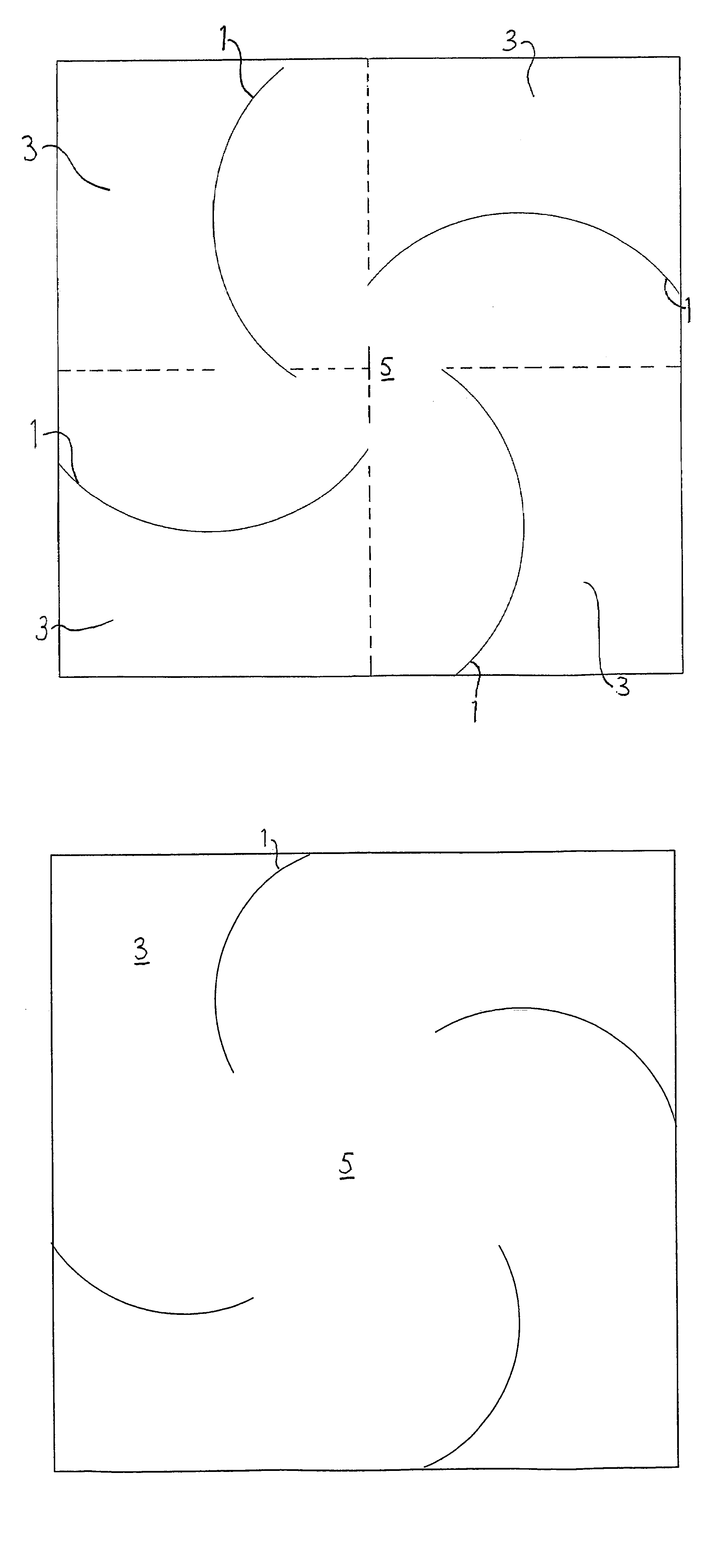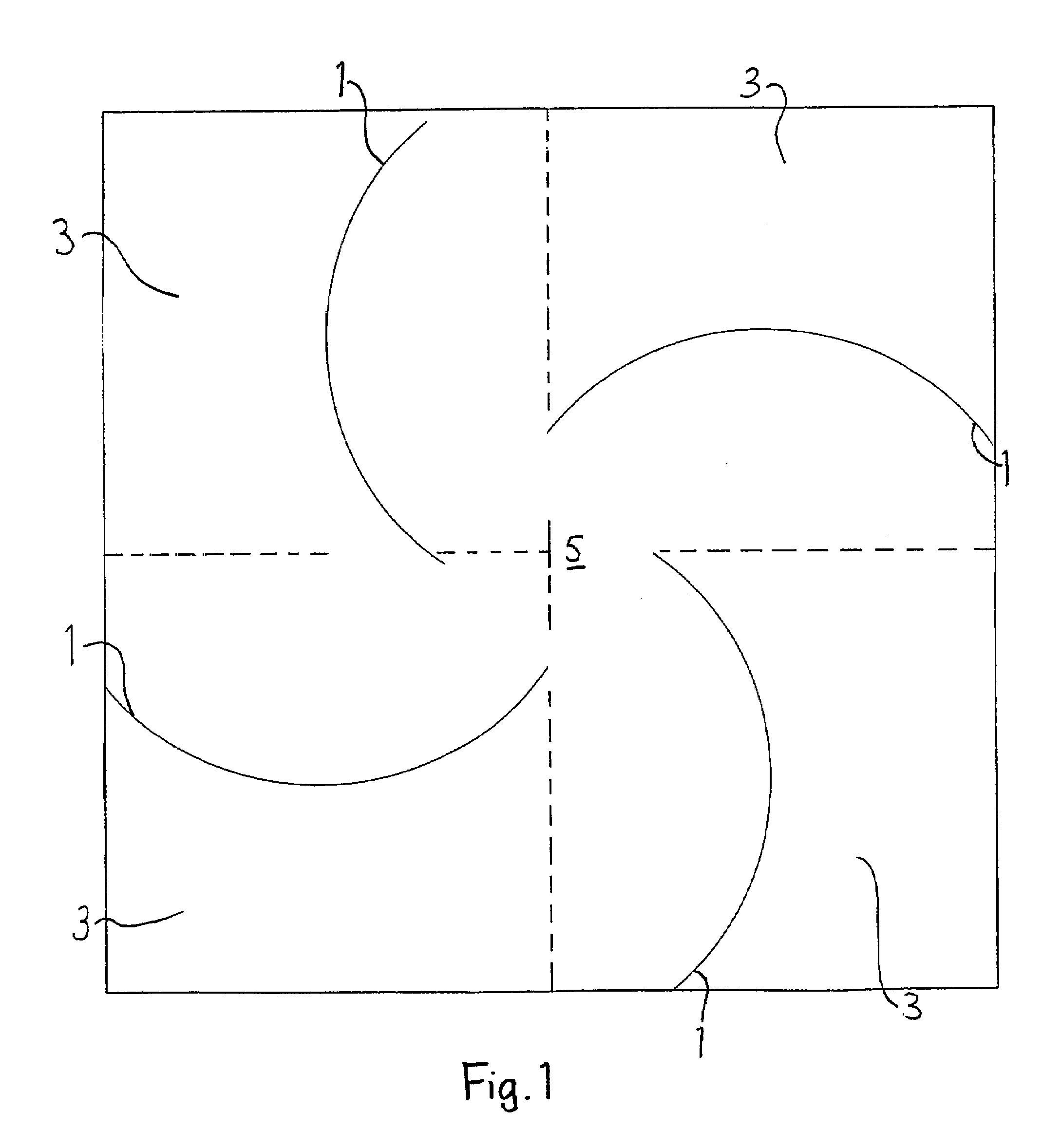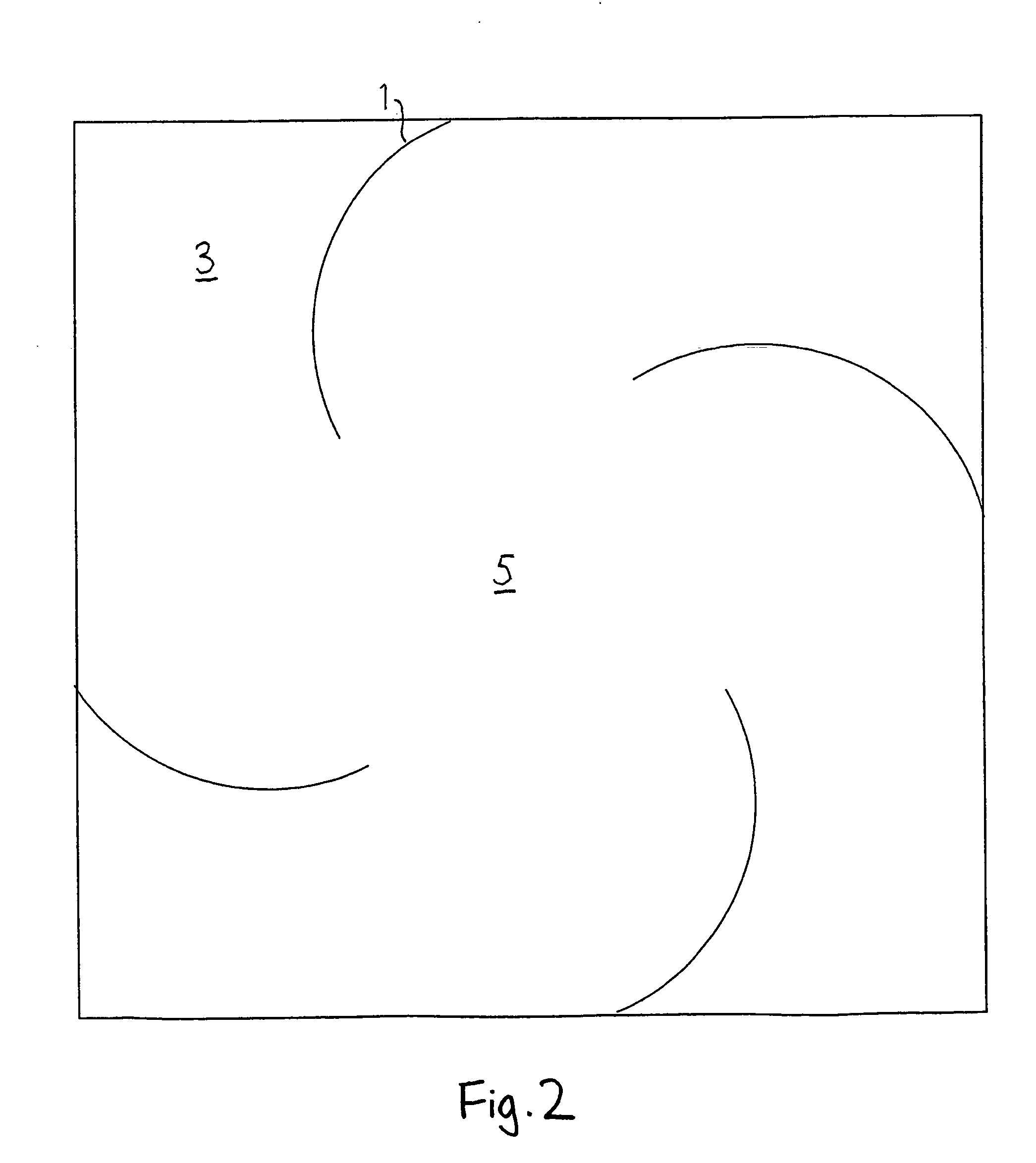Method of making a helmet
a protective helmet and ballistic technology, applied in the field of making a protective helmet and a helmet, can solve the problems of high cost, limited cutting speed, and high cost of preferred fabrics such as “kevlar”® sold by dupont, and achieve the effect of reducing waste and strengthening the helm
- Summary
- Abstract
- Description
- Claims
- Application Information
AI Technical Summary
Benefits of technology
Problems solved by technology
Method used
Image
Examples
Embodiment Construction
[0020]FIG. 1 shows a square blank of side 0.5 m cut from a strong woven fabric that has been impregnated with phenolic resin. Positions on the blank will be considered as Cartesian coordinates, with the bottom left-hand corner of the blank at the origin and the length of each side being one unit. Four cuts 1 are formed, starting from the points (0.375, 0), (1, 0.375), (0.625, 1) and (0, 0.625). The cuts are arcs of circles centered about the points (0.6875, 0.25), (0.75, 0.6875), (0.3125, 0.75) and (0.25, 0.3125) respectively. The cuts terminate at the points (0.375, 0.5), (0.5, 0.375), (0.625, 0.5) and (0.5, 0.625) respectively, i.e. at the first perpendicular bisector of any side of the blank reached (shown dotted).
[0021]This divides the blank into four lobe portions 3 and a crown portion 5.
[0022]FIG. 2 shows a square blank of side 0.25 m, in which four cuts are made, similar to those of the blank of FIG. 1 but shorter.
[0023]A stack of blanks alternating between the blanks of FIG....
PUM
| Property | Measurement | Unit |
|---|---|---|
| thickness | aaaaa | aaaaa |
| thickness | aaaaa | aaaaa |
| angle | aaaaa | aaaaa |
Abstract
Description
Claims
Application Information
 Login to View More
Login to View More - R&D
- Intellectual Property
- Life Sciences
- Materials
- Tech Scout
- Unparalleled Data Quality
- Higher Quality Content
- 60% Fewer Hallucinations
Browse by: Latest US Patents, China's latest patents, Technical Efficacy Thesaurus, Application Domain, Technology Topic, Popular Technical Reports.
© 2025 PatSnap. All rights reserved.Legal|Privacy policy|Modern Slavery Act Transparency Statement|Sitemap|About US| Contact US: help@patsnap.com



